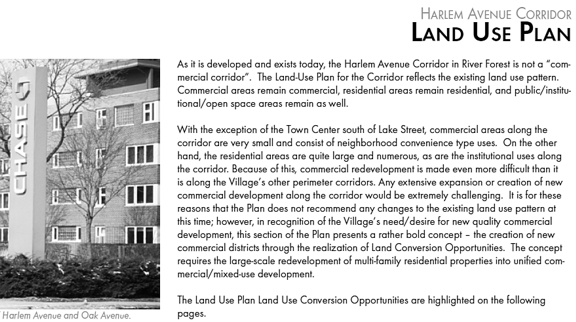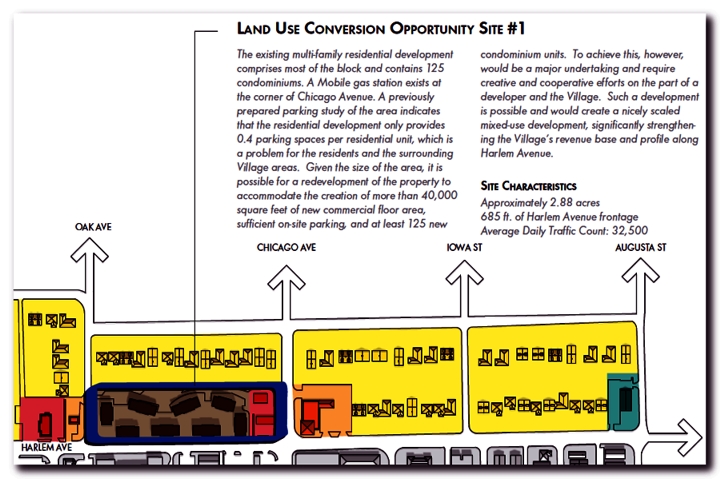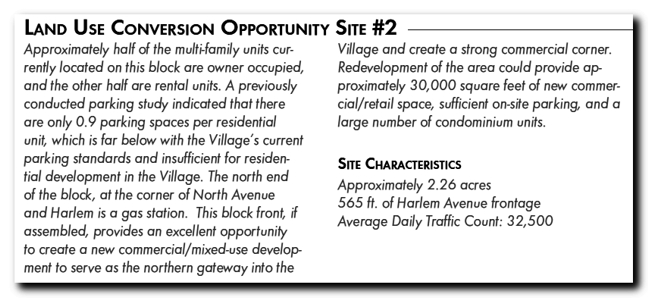
Sadly River Forest has a history of seeking to eliminate housing that all but the rich can afford. These proposals in the draft Corridors Plan continue that tradition established under previous village boards and plan commissions. The current village board can continue to reverse these exclusionary policies by removing pages 77 through 79 from the draft Corridors Plan. The objectionable proposals that should be removed from the Corridors Plan are reproduced below along with commentary about why they should be removed.
Please note: In the excerpt immediately below, the plan states that it “does not recommend any changes to the existing land use pattern at this time.” This is extraordinarily misleading. Few plans actually call for immediate changes to a land use pattern. What they do is set the stage for future redevelopment. Including these proposals in the Corridors Plan places a big target on these homes and tells developers that the village wants proposals to carry out these demolitions and redevelopment.

Targeted Area #1: The River Forest Garden Condominiums (on Harlem between Chicago Avenue and Oak) plus the Mobile Gas Station at Chicago and Harlem.
The Problems: The proposed redevelopment would eliminate the entire River Forest Garden Condominiums -- 125 condos that teachers, librarians, village employees, social workers, retail workers, our children, and our seniors can afford without any government subsidy. In their place would go 125 condominiums that would have to sell for at least two to three times what the current condos fetch, plus more than twice as much off–street parking, and 40,000 square feet of retail. The result would be the densest and most intense use of land in River Forest — manifestly incompatible with the single family homes adjacent to it on Bonnie Brae. And the people who live there now would be displaced from River Forest since there is so little in their price range here they could move to.
Calculating the cost of the replacement housing: The average price of the current condominums hovers around $135,000 (that's a low estimate). It would cost nearly $17 million just to acquire these condos plus the cost of the Mobile station at the north end of the block. With such high acquisition costs, any developer would have to sell new condos for at least $300,000 each to come close to making a profit. The prices would most likely be a lot higher than $300,000. Few, if any, of the current residents could afford to buy one of those.


Targeted Area #2: The condominiums and apartments on Harlem between LeMoyne and North Avenue plus the Shell Gas Station.
The Problems: The proposed redevelopment would eliminate scores of rental apartments and condominiums that teachers, librarians, village employees, social workers, retail workers, our children, and our seniors can afford without any government subsidy. In their place would go only condominiums -- no rentals -- that would have to sell for at least two to three times what the current condos sell for, plus off–street parking, and 35,000 square feet of retail. The result would be one of the densest and most intense uses of land in River Forest — manifestly incompatible with the single family homes adjacent to it on Bonnie Brae. And the people who live there now would be displaced from River Forest since there is nothing in their price range here they could move to.